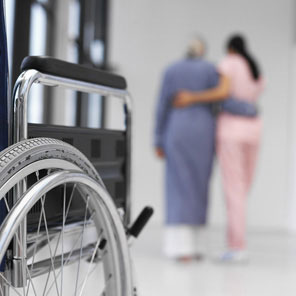
Aggressive or disruptive behavior may be caused by different factors. It can either be physical or psychological in nature. Some possible physical causes include trauma to the brain, metabolic disorders, effects of alcohol or drugs, and stress response; meanwhile emotional causes include the loss of a loved one, feeling of helplessness or desperation, or some psychological conditions.
The victim may display aggressiveness right away or develop it while you are rendering care. You might also find clues about disruptive behavior of the victim surrounding such as broken furniture, drugs, and other signs of violence while approaching the victim. Bystanders, loved ones, or neighbors may report the patient to be hostile. In such cases, you should be on guard and always keep safety your top priority.
When a patient shows intentions to harm himself or others, your first goal should be your personal safety. In case the patient becomes violent, be sure to call the help of police.
If the patient has weapons or indications to use physical force, do not intervene until the police can control the scene. Most aggressive patients will consider your actions as threats rather than help. Your attempts to provide first aid may bring about hostile behaviors directed against others or to you.
Talk to the patient in a calm and gentle way. If the patient does not want to talk to you, do not force him. Once the situation has been controlled or the patient stops displaying aggressiveness, approach the patient slowly. Be on watch for possible resurgence of aggression. Assess the patient for injuries and provide first aid. Be sure to always stay on guard and to have an escape route as the patient may become belligerent again. In case the patient becomes belligerent while you are providing first aid, retreat and stay in a safe distance while waiting for police to arrive.
In most cases, aggressive patients will have cuts or wounds. Be ready to render wound care as quickly as possible. If the patient is bleeding, use bandage to apply pressure to the bleeding site. If you are alone, it is best to ask for help before you administer first aid.
